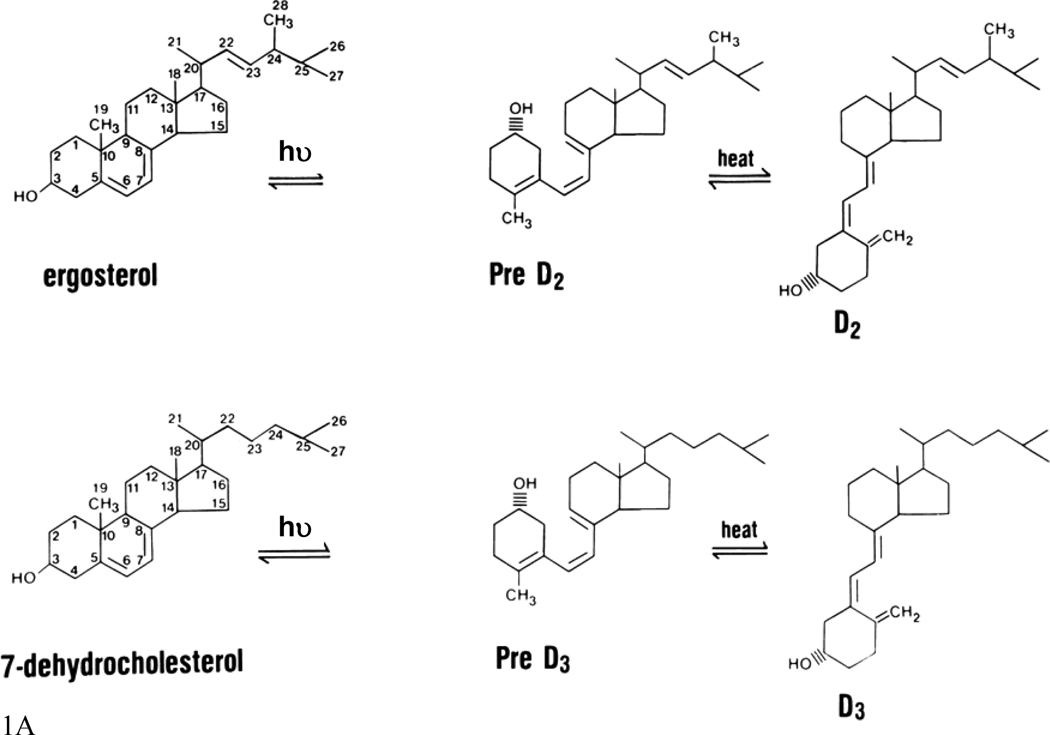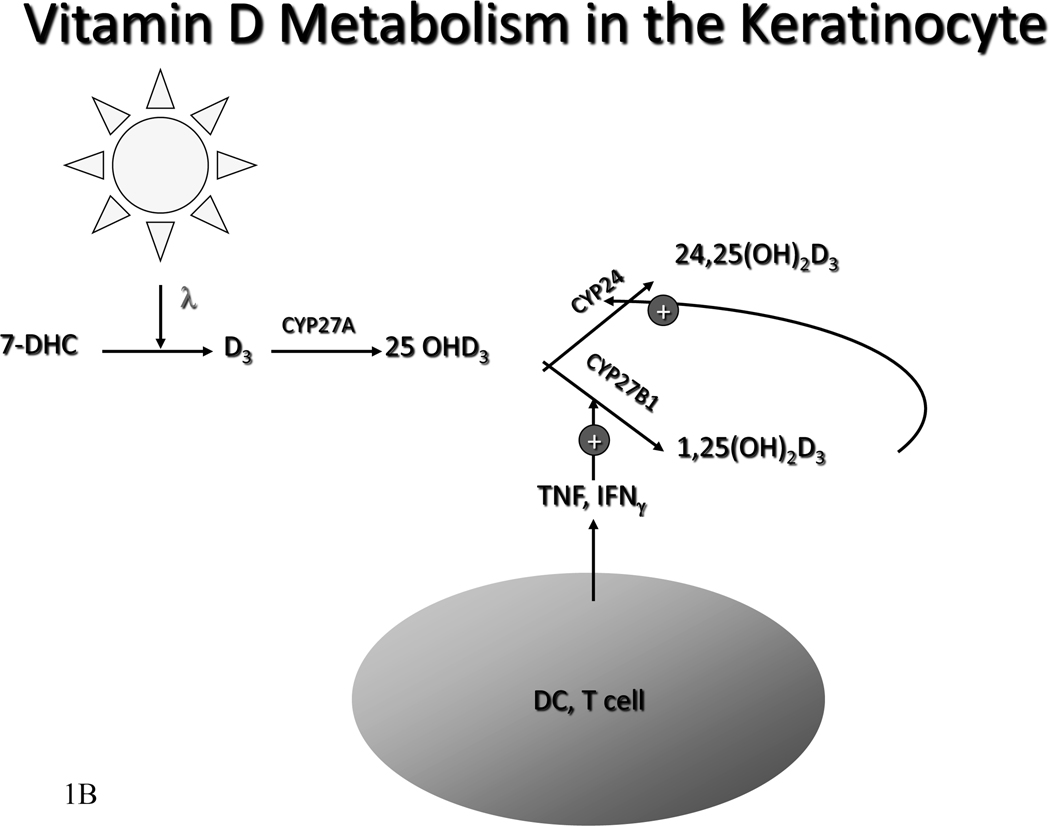Figure 1. The production of vitamin D and its subsequent metabolism.
A. Vitamin D production. Sunlight (the ultraviolet B component) breaks the B ring of the precursor sterol to form pre- D2 or pre-D3 from ergosterol or 7-dehydrocholesterol, respectively. In a temperature dependent step the A ring is rotated around the C5 to C6 double bond so that the 3β-hydroxyl group is positioned below the plane of the A ring to form D2 and D3.
B. Metabolism of Vitamin D in the keratinoocyte. In the rest of the body the liver converts vitamin D to 25OHD. The kidney converts 25OHD to 25OHD and 1,25(OH)2D. Regulation of CYP27B1 in the kidney is exerted by calcium, phosphorus, parathyroid hormone, FGF23, and 1,25(OH)2D itself. However, in the keratinocyte, vitamin D can be directly metabolized to 25OHD and further metabolized to 25OHD and 1,25(OH)2D. Cytokines such as TNF and IFN-γ are the principal regulators of CYP27B1 in the keratinocyte.


